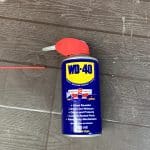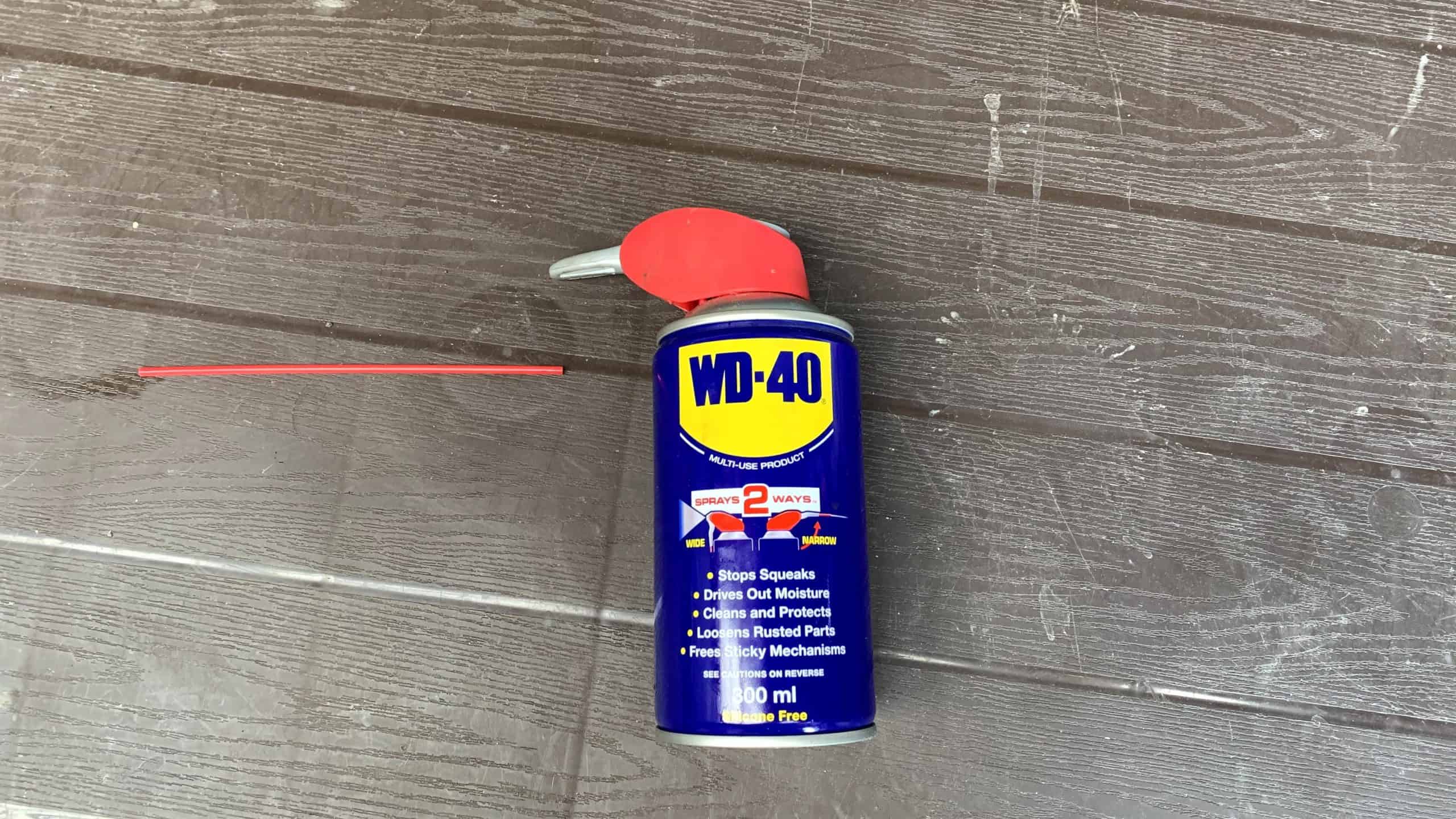WD-40 is a powerful cleaner to remove grime from windows. However, it can leave a strong smell and this is overpowering when it is in a confined space like a car interior.
So how do you get WD-40 off glass and windows?
WD-40 has to be removed to reduce the smell and should be wiped off with a rag. Soapy warm water can be used to clean up the residue. Isopropyl alcohol may also get rid of the WD-40 and its smell.
I’ll run through WD-40’s abilities in regards to window cleaning and tips for getting the most out of using it as a cleaner. We’ll also go over ways to make sure you don’t get left with a bad smell or any damage to your windows.

Is WD-40 Good For Cleaning Glass?
WD-40 will remove all types of dirt and buildup on a window but doesn’t do a good job of fully cleaning the window.
This means WD-40 is good for cleaning glass because it breaks down hard water stains, dirt, and soap scum on glass.
After that, you’ll need some type of window cleaner or detergent to wipe off WD-40 and give it a finish.
A homemade glass cleaner can be made by combining 1/4 cup white vinegar with a 1/2 teaspoon of liquid dish soap. Add two cups of water to dilute, then shake the bottle vigorously to mix.
WD-40 is not always the best choice for all cleaning jobs. WD-40 is unlikely to do particularly well in places like bathrooms as it will not remove mold or other types of buildup as well as specialty bathroom cleaners. It also has a smell that lingers!
WD-40 can be sprayed onto the glass and left for 15 minutes to break down stains. After that, you wipe it off with a microfiber cloth. Stubborn stains may need additional scrubbing and another round of WD-40.
Does WD-40 Damage Glass?
WD-40 can be sprayed on glass with no problems.
WD-40 is petroleum-based and so has a strong smell. By rinsing the glass with water you should be able to remove most of the smell.
WD-40 shouldn’t be used to clean an entire window and so you should limit your usage of it to problem areas, such as gum or tape that you wish to remove.
WD-40 also shouldn’t be used with plastic, electronics, and places that pose a fire hazard. WD-40 is highly flammable and care should be taken when using it in a confined space. Heat and sparks are liable to cause the vapors to ignite.
What Dissolves WD-40?
WD-40 will leave behind a protective film that will not completely evaporate after use. This means that you will need to wipe up the wet excess with a rag after spraying WD-40. Degreasers and 99% isopropyl alcohol may be effective dissolvers of WD-40.
To further remove the remaining WD-40, wipe down using a dry, clean cloth. The dirt or adhesive on the surface should wipe off with the product.
If WD-40 comes into contact with your hands, the WD-40 Material Safety Data Sheet instructs you to wash your hands using soap and water. This is also illustrative in considering how to remove WD-40 in other situations.
Rinsing or wiping with soapy water should help remove WD-40.
If WD-40 has been sprayed inside a device, it will leave behind a residue. This residue has rust prevention properties but can also be a magnet for dust and grime to build up.
Generally, you will need to fully disassemble and clean a device to remove all traces of WD-40. Even a small amount of WD-40 can be responsible for emitting vapors for quite some time.
Instead of immersing in water, isopropyl alcohol at 99% or more may remove WD-40 more effectively. Isopropyl alcohol can also be put in a spray bottle for application to glass and windows.
Another option is a degreaser. WD-40 comes in a degreaser version that will do the job and you can easily get it off Amazon. Applying a degreaser and letting it sit for a few hours followed by wiping it off with a rag should clear up the remaining WD-40.
Getting Rid Of WD-40 Smell
Sodium bicarbonate can be used to lessen or remove the smell of WD-40. Sprinkling on areas treated by WD-40 to soak up WD-40 may help lessen the smell.
You can also leave a bowl of baking powder near the offending area.
Will Rubbing Alcohol Remove WD-40?
Rubbing alcohol can refer to many products. Generally, the main ingredient in rubbing alcohol is isopropyl alcohol, however, the amount can range anywhere from less than 50% to over 70%. The remaining makeup of rubbing alcohol will generally be water.
The amount of water in rubbing alcohol does not make it ideal to do any sort of removal of WD-40. This means that only 99% isopropyl alcohol should be used.
Does WD-40 Remove Stickers And Tape From Glass?
WD-40 is advertised as being particularly good at removing residue left behind after tape has been applied to glass such as windows.
Spray WD-40 on the sticker or tape. Wait 20 minutes, and then use a plastic scraper to take the sticker and the sticky residue off as much as possible. Repeat the process until there is no more tape or glue on the surface.
What Does WD-40 Do To Windows?
WD-40 is safe to use on glass and so can help to clean off stubborn stains and grime.
WD-40 can seep into the wood or material surrounding the windows and cause staining or give off a prolonged smell. It’s best to adequately cover nearby surfaces at risk of damage. This is common when the WD-40 drips down and covers the bottom seals or supports.





